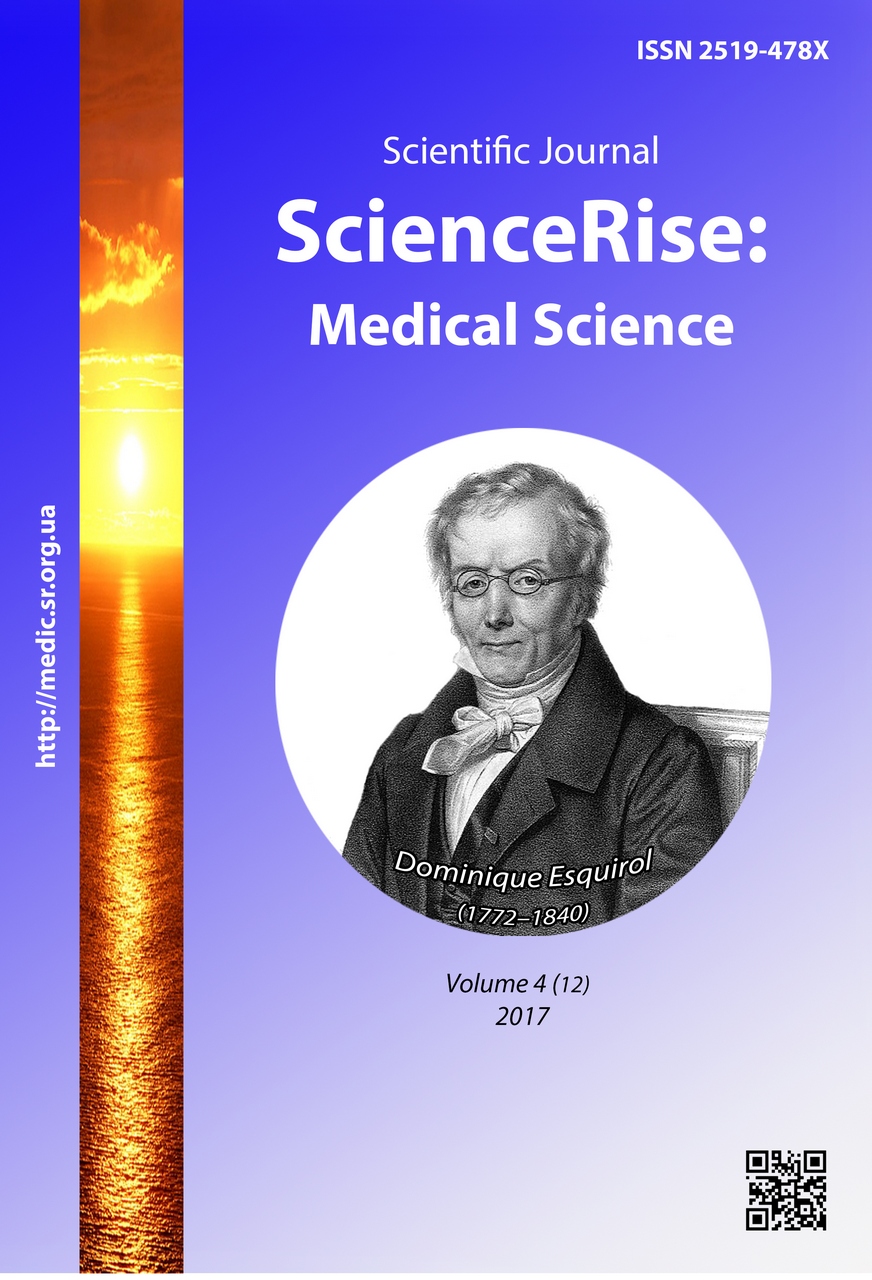Сравнительный анализ накопления ацетата свинца в плазме крови, моче и гомогенатах твердых тканей зубов крыс
DOI:
https://doi.org/10.15587/2519-4798.2017.100481Ключові слова:
свинец, атомно-абсорбционный спектрометр, плазма крови, моча, гомогенат твердых тканей зубовАнотація
Актуальным остается изучение токсического действия соединений свинца на твердые ткани зубов, поскольку свинец отнесен ВОЗ к глобальным загрязнителям окружающей среды. В исследовании методом атомно-абсорбционной спектрометрии проведен сравнительный анализ накопления ацетата свинца в плазме крови, моче и гомогенатах твердых тканей зубов контрольной группы крыс и в группе крыс получавших ацетат свинца в течении 1,2 и 3 месяцев и выявлена наибольшая концентрация спустя три месяца
Посилання
- Tchounwou, P. B., Yedjou, C. G., Patlolla, A. K., Sutton, D. J. (2012). Heavy Metal Toxicity and the Environment. Experientia Supplementum, 133–164. doi: 10.1007/978-3-7643-8340-4_6
- Trahtenberg, I. M., Dmitruha, N. M., Lugovskiy, S. P., Chekman, I. S. (2015). Svinets – nebezpechniy polyutant. Problema stara I nova. Suchasni problemi toksikologiyi, horchovoi ta himichnoi bezpeki., 3, 14–24.
- Kianoush, S., Balati-Mood, M., Mousavi, S. R. et. al. (2013). Clinical toxicological, biochemical and hematologic parameters in lead exposed workers of a car battery industry. Iran J. Med. Sci., 38 (1), 30–37.
- Verteletskaya, M. I., Semenova, K. A., Avramenko, L. P., Bolotnova, T. V. (2015). Struktura, klinicheskie osobennosti somaticheskoy patologii u rabochih svintsovogo proizvodstva. Akademicheskiy zhurnal Zapadnoy Sibiri, 1 (56), 10–11.
- Krotenko, I. S., Movchan, L. N., Alshevskaya, V. E., Zvereva, N. L. (2011). Vliyanie na zdorove naseleniya vyibrosov vrednyih veschestv avtotransporta. EkologIya Harkivschini: stan, problemi, perspektivi, 126.
- Erem, T. V. (2015). Harakteristika vmistu deyakih vazhkih metaliv u produktah harchuvannya, scho stanovlyat ratsion meshkantsiv Zakarpatskoyi oblasti. Enviroment&Health, 4, 23–25.
- Mason, L. H., Harp, J. P., Han, D. Y. (2014). Pb Neurotoxicity: Neuropsychological Effects of Lead Toxicity. BioMed Research International, 2014, 1–8. doi: 10.1155/2014/840547
- Sushanlo, R. Sh. (2016). Vliyanie svintsovoy intoksikatsii i gipoksii na serdechno-sosudistuyu sistemu (literaturnyiy obzor). Sibirskiy med. zh., 31 (3), 33–38.
- Mishra, K. P. (2009). Lead exposure and its impact on immune system: A review. Toxicology in Vitro, 23 (6), 969–972. doi: 10.1016/j.tiv.2009.06.014
- Vepryuk, Yu. M. (2013). Vozrastnyie osobennosti ionoreguliruyuschey funktsii pochek pri vozdeystvii solyami alyuminiya i svintsa v usloviyah gipofunktsii shishkovidnoy zhelezyi. The journal of scientific articles «Health & education millennium», 15 (1-4), 243–246.
- Dovgal, G. V. (2014). MorfologIchnI zmIni v rozvitku pechInki schurIv pri vplivI atsetatu svintsyu ta za umov korektsii v prenatalnomu periodi. Ukrayinskiy morfologIchniy almanah, 12 (1), 42–44.
- Lugovskoy, S. P., Legkostup, L. A. (2002). Mehanizmyi biologicheskogo deystviya svintsa na pischevaritelnuyu sistemu. Suchasni problemi toksikologii, 2, 45–50.
- Romanyuk, A. M., Saulyak, S. V., Moskalenko, Yu. V., Romanyuk, O. K., Shkroba, A. O. (2013). Morfologichni zmini u statevih organah (sim’yaniki, peredmihurova zaloza) v umovah vplivu na organizm soley vazhkih metaliv. Tavricheskiy mediko-biologicheskiy vestnik, 16 (1 (61)), 210–211.
- Ilicheva, S. A., Zaridze, D. G. (2015). Izuchenie kantserogennosti svintsa v kogortnom issledovanii muzhchin-rabotnikov tipografii Moskvyi.Gigiena i sanitariya, 5, 75–77.
- Kutsevlyak, V. F., Lahtin, Yu. V. (2011). Intensivnist kariesu zubiv sered naselennya, scho prozhivae v umovah pidvischenogo vplivu soley vazhkih metaliv. Novini stomatologiyi, 3, 58–60.
- Lahtin, Yu. V., Grigoreva, L. I., Polosuhin, V. A., Zorina, O. A. et. al. (2012). Vliyanie soley tyazhelyih metallov na vozniknovenie osnovnyih stomatologicheskih zabolevaniy. Kyiv: Ekologiya i zdorove naseleniya, 149–180.
##submission.downloads##
Опубліковано
Як цитувати
Номер
Розділ
Ліцензія
Авторське право (c) 2017 Valentina Kutsevlyak, Natalia Bobrovska, Konstantin Belikov, Tatyana Sheina

Ця робота ліцензується відповідно до Creative Commons Attribution 4.0 International License.
Наше видання використовує положення про авторські права Creative Commons CC BY для журналів відкритого доступу.
Автори, які публікуються у цьому журналі, погоджуються з наступними умовами:
1. Автори залишають за собою право на авторство своєї роботи та передають журналу право першої публікації цієї роботи на умовах ліцензії Creative Commons CC BY, котра дозволяє іншим особам вільно розповсюджувати опубліковану роботу з обов'язковим посиланням на авторів оригінальної роботи та першу публікацію роботи у цьому журналі.
2. Автори мають право укладати самостійні додаткові угоди щодо неексклюзивного розповсюдження роботи у тому вигляді, в якому вона була опублікована цим журналом (наприклад, розміщувати роботу в електронному сховищі установи або публікувати у складі монографії), за умови збереження посилання на першу публікацію роботи у цьому журналі.










